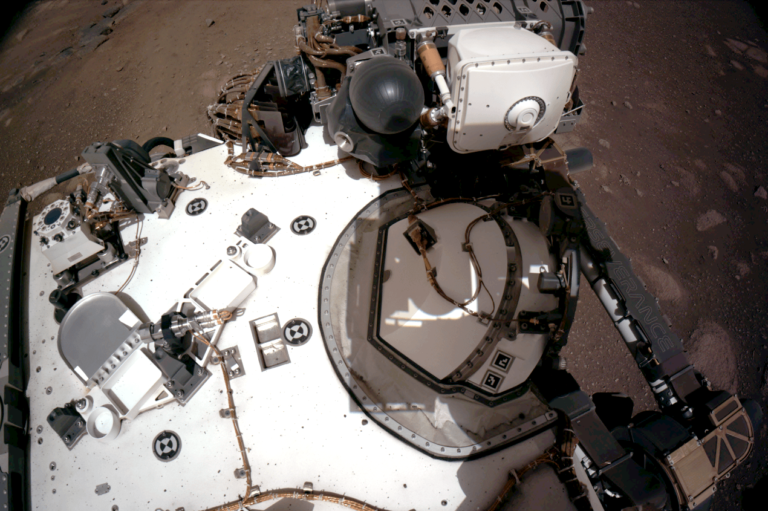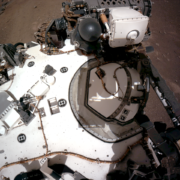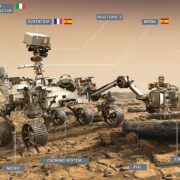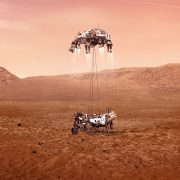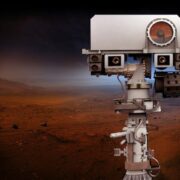Mission launch: 30/07/2020
Mars landing: 18/02/2020
Landing site: Jezero Crater
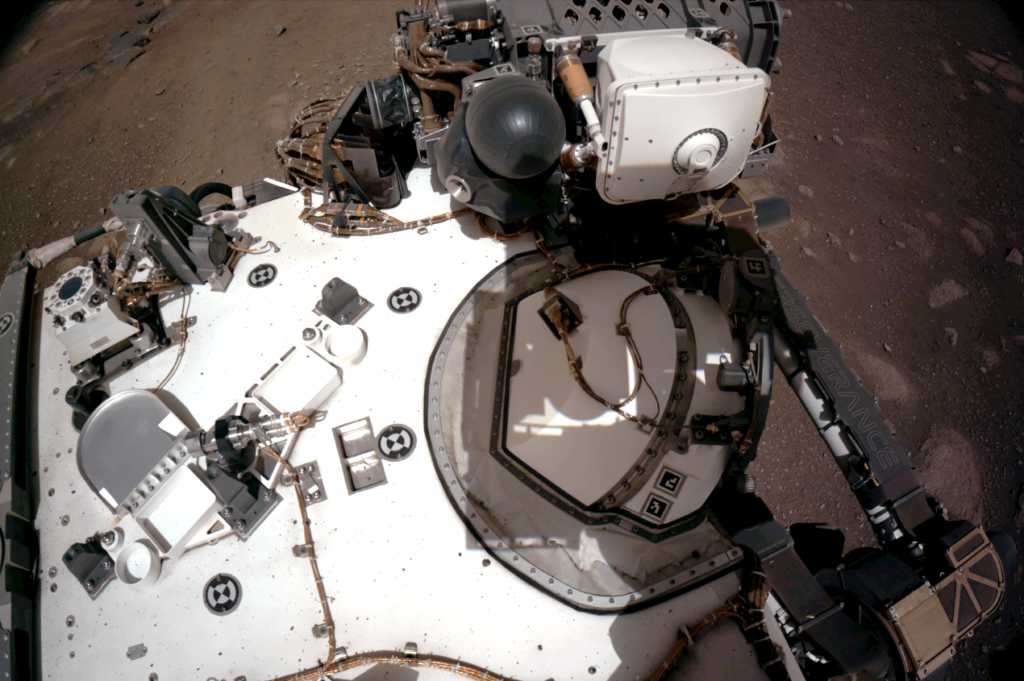
NASA’s Mars 2020 mission is part of NASA’s Mars Exploration Program and comprises the Perseverance rover, similar to the MSL mission’s Curiosity rover, and the Ingeniuty helicopter.
Mars 2020 is designed to study the geology of Mars and detect signs of life from the past. Perseverance will collect and store a suite of rock and soil samples so that they can be brought back to Earth by future missions. It will also test new technology that will serve as a basis for future robotic and human exploration.
Centro de Astrobiología takes part in this mission through the development of one of its instruments, the MEDA (Mars Environmental Dynamics Analyzer) environmental station.
MEDA, whose main objective is the environmental and dust characterisation on the surface of Mars, consists of seven sensors, distributed on the deck and the mast of the vehicle, which will carry out their operations in coordination with the rest of the instruments that form part of the mission. Specifically, these are:
– ATS: soil and air temperature sensor.
– HS: humidity sensor.
– PS: atmospheric pressure sensor.
– RDS: radiation and dust sensor.
– TIRS: infrared thermal sensor
– WS: two wind sensors
All these sensors are controlled by the so-called Instrument Control Unit (ICU).
MEDA has been built by an international team, led by the Centro de Astrobiología and INTA, and including the following Spanish institutions: the University of Alcalá, the Polytechnic University of Catalonia (Micro and Nanotechnology Group), the University of Seville/Instituto de Microelectrónica de Sevilla, the Instituto de Química-Física Rocasolano, the University of the Basque Country, and the companies Airbus DS-Tres Cantos, ALTER Technology and AVS Added Value Solutions.
The following institutions are also part of the consortium: Jet Propulsion Laboratory (JPL), Cornell University, NASA Goddard, Lunar and Planetary Institute, Aeolis Research, Sace Science Institute, the University of Padua and the Finnish Meteorological Institute.
This project has had the Centre for the Development of Industrial Technology (CDTI) and the Ministry of Science and Innovation as funding agents.
In addition to MEDA, the Perseverance rover has six other instruments:
– Mastcam-Z, an advanced camera system that will allow panoramic, stereoscopic and xoom images to be captured.
– SuperCam, which will provide remote imaging, chemical composition analysis and mineralogy.
– PIXL, an X-ray fluorescence spectrometer that will analyse the chemical composition of Martian surface materials.
– SHERLOC, a spectrometer that will provide images on a very fine scale and use an ultraviolet laser to analyse minerals and organic compounds.
– MOXIE, a technology demo that will produce oxygen from carbon dioxide in the Martian atmosphere that can be used by future astronauts.
– RIMFAX, a penetrating radar to analyse the geological structure of the subsoil.
But Spanish participation does not end with MEDA. The Perseverante rover has a high-gain antenna (HGAS, High-Gain Antenna System), similar to the one installed on the Curiosity rover. This antenna will allow the rover to communicate directly with the Earth and has been developed by a consortium formed by Airbus DS and Sener, with the CDTI as the funding body.






